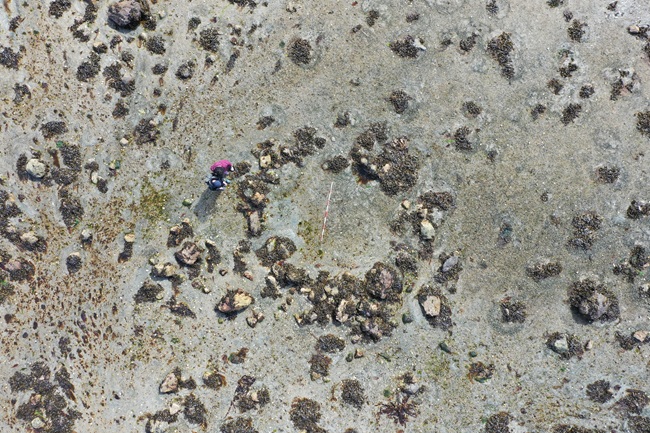Ancient human settlement discovered on Scottish island pushes known boundaries
Published: 28 April 2025
A team of archaeologists and scientists led by Karen Hardy, Professor of Prehistoric Archaeology at the University of Glasgow, has discovered evidence for one of the earliest human populations yet known in Scotland.

A team of archaeologists and scientists led by Karen Hardy, Professor of Prehistoric Archaeology at the University of Glasgow, has discovered evidence for one of the earliest human populations yet known in Scotland.
Stone tools found on the Isle of Skye have been dated to a period known as the Late Upper Palaeolithic (LUP), around 11,500 – 11,000 years ago. The wider context of these finds has been analysed in detail, with respect to highly detailed maps of local glacier formation and an enigmatic group of stone circular structures which appears to lie below modern sea level. These sites were discovered by Professor Hardy and local archaeologist, Martin Wildgoose.
Their discovery means that the west coast now represents the largest concentration of evidence for these pioneer human populations anywhere in Scotland and reveals how early humans of this period ventured much further north than previously believed.
The discoveries have been announced in a paper – At the far end of everything: A likely Ahrensburgian presence in the far north of the Isle of Skye, Scotland – published in The Journal of Quaternary Science.
Professor Karen Hardy says: “This is a hugely significant discovery which offers a new perspective on the earliest human occupation yet known, of north-west Scotland.”
The team, from the universities of Leeds, Sheffield, Leeds Beckett and Flinders in Australia worked together to reconstruct the local landscape and changing sea levels. During this period, which is immediately after the Younger Dryas (also known as the Loch Lomond Stadial), when much of west Scotland was buried under ice, groups of nomadic hunter-gatherers most likely of the Ahrensburgian culture from northern Europe, crossed Doggerland, an area that is now covered by the North Sea, and established themselves on Skye.

Back then, the landscape of Scotland would have looked very different to today.
Professor Hardy adds: “The journey made by these pioneering people who left their lowland territories in mainland Europe to travel northwards into the unknown, is the ultimate adventure story.
“As they journeyed northwards, most likely following animal herds, they eventually reached Scotland, where the western landscape was dramatically changing as glaciers melted and the land rebounded as it recovered from the weight of the ice. A good example of the volatility they would have encountered can be found in Glen Roy, where the world-famous Parallel Roads provide physical testament to the huge landscape changes and cataclysmic floods that they would have encountered, as they travelled across Scotland.”
Once they reached Skye, these early people crafted tools from stone found locally on Skye. Professor Hardy believes the settlers deliberately and strategically chose where to base themselves as they selected a location that had good access to coastal and riverine resources, as well as natural materials like ochre that was highly valued by ancient cultures.
The paper concludes by saying: “While the number of Ahrensburgian findspots is low, they are spread widely across Scotland, including from the islands of Tiree, Orkney and Islay, that also imply significant sea journeys, suggesting a larger population than the number of finds might imply. To date, all Late Upper Palaeolithic (LUP) sites in Scotland have been discovered by chance, and there is insufficient evidence to address further questions regarding their adaptations and lifestyles. By reconstructing the geographical limitations imposed by ice sheet evolution, changes in Relative Sea Level (RSL) and river courses, it may be possible to focus on other likely locations – both onshore and offshore – and begin to uncover more evidence.”
The paper adds: “Recovering evidence for a LUP presence in Scotland presents challenges unmatched in continental Europe. However, despite being distant from its central area, the evidence from Skye reflects an Ahrensburgian presence at the extreme north- west continental limit, extending their distribution. The people who made these artefacts originated in the mainland of northwest Europe, crossed Doggerland into what is now Britain, and eventually reached the far north of the Isle of Skye. Here, they adapted to live in a fragmented, fluctuating, and volatile environment amid melting glaciers, mountains, and oceans – vastly different from the low-lying environments of their homelands on the northwestern edge of the Great European Plain.”
Although the sites themselves cannot be visited, the landscape these early pioneers encountered can be imagined at Sconser. Around 11,000 years ago, after the last of the Cuillin Mountain glaciers had melted, the sea level would still be lower than today, and it would have been possible to walk to Raasay.
First published: 28 April 2025

